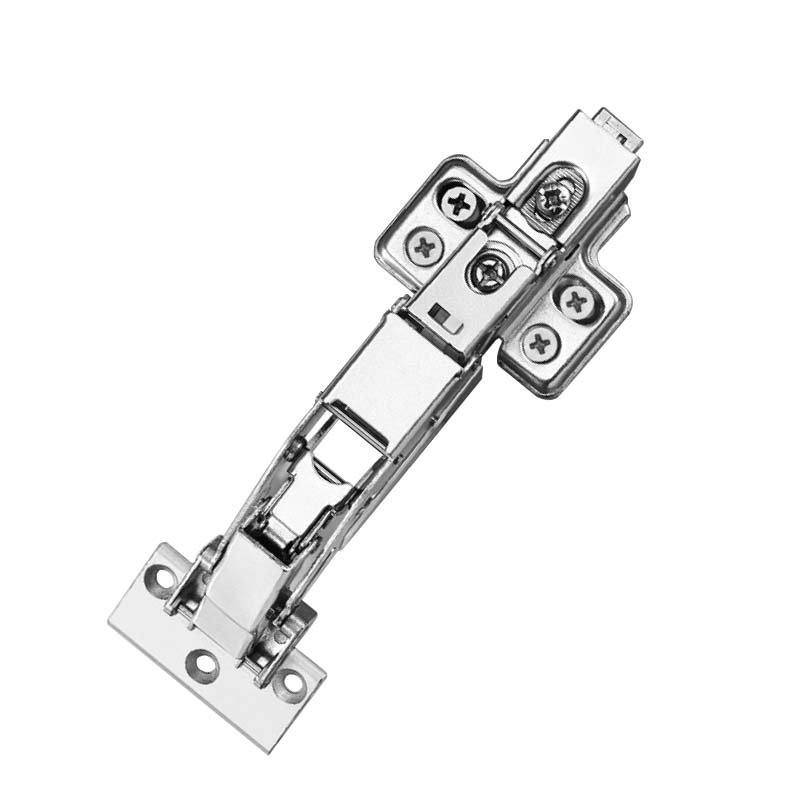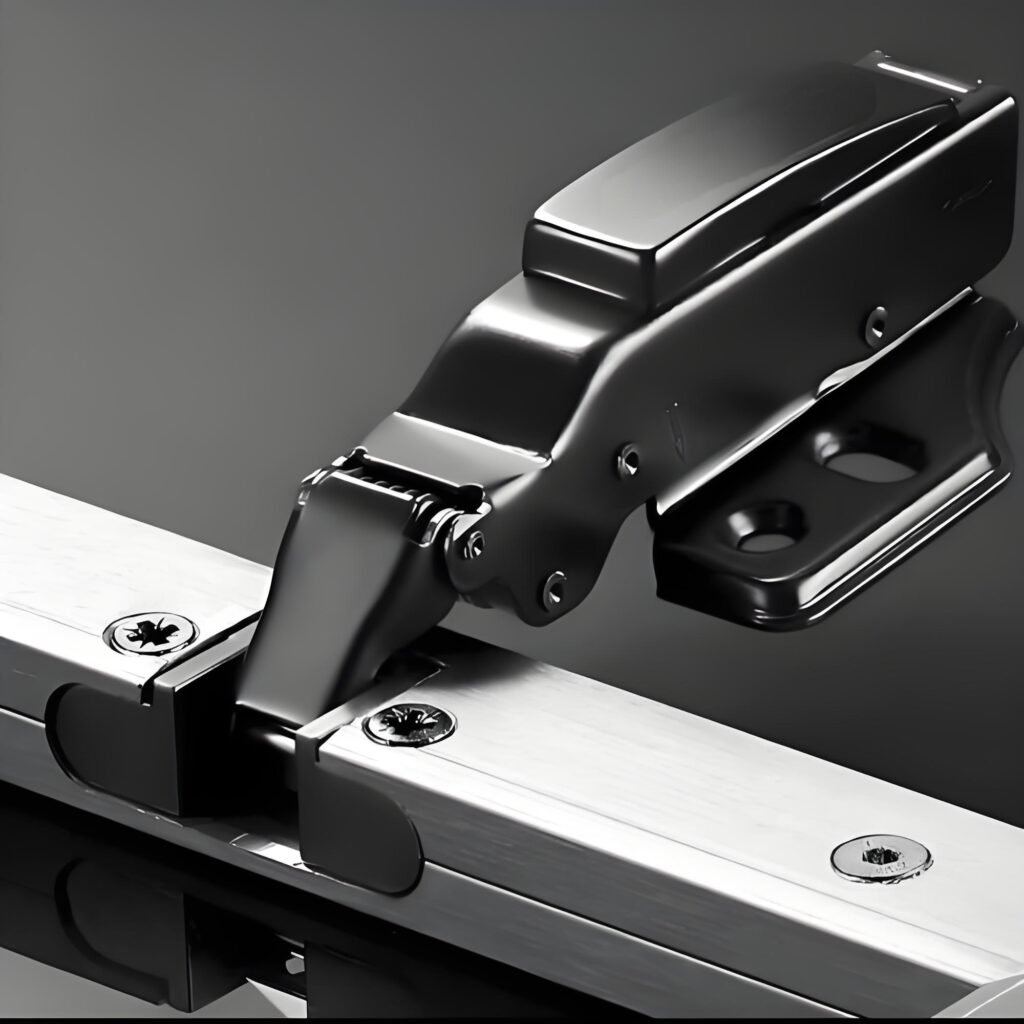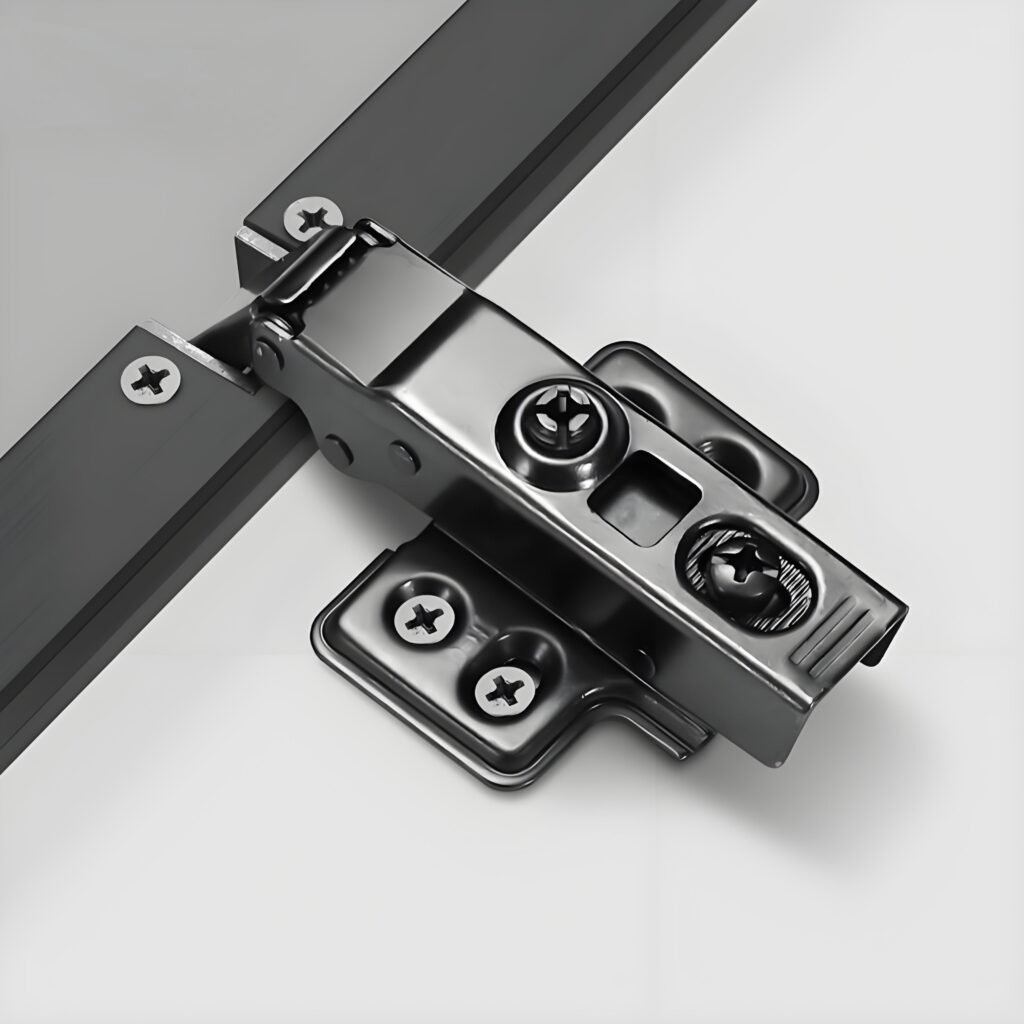
125° Removable Soft Close Glass Door Hinges - BH
Main Material: Cold-rolled steel/Q235
Finish: Nickel Plated
Opening hinge: 125°
Door (K) dimension: 0-22mm
Optional 3D adjustment, plastic buckle, for profile, without oil cylinder.
Application Segment
Glass Doors


Our Services

MOQ Offered
We provide flexible minimum order quantities, allowing you to start small and scale up as needed.

Large Inventory
Ensuring Ample Stock for Immediate Shipment, Eliminating Wait Times for Production.

Complete Specifications
We refine various specifications of hinges according to different usage scenarios.
AOLISHENG manufactures glass door hinges that meet standards, offering customized services and solutions to help your business succeed.
Why Choose AOLISHENG
Rich Experience
With years of glass door hinges production experience, we have a team of professionals specializing in hinge design, manufacturing, and management.
Leading Production Capacity
We possess CNC machining for heavy-duty applications, wire-cutting machines, automated balancing, pressing equipment, and electroplating production lines for hinge manufacturing.
Quality Assurance
All hinges undergo over 48 hours of salt spray testing and are subjected to more than 80,000 cycles of open-close testing with appropriate door weights, meeting the quality standards of QB/T2189-1995.
Mass Production Capability
With over 10,000 square meters of production facilities and thousands of square meters dedicated to electroplating workshops, we ensure a large-scale supply of hinges.
We Look Forward To Your Contact
AOLISHENG is your trusted global partner for high-quality drawer slide and hinges production, with strategic factories worldwide and professional local service teams. Partnering with AOLISHENG ensures efficient project delivery, robust supply chains, expert technical support, and a thriving customer base.
FAQ
What are glass door hinges?
Glass Door Hinges are hinges designed specifically for installing glass doors. Unlike traditional hinges for wooden or metal doors, glass door hinges need to meet special design and functional requirements to ensure the safety, stability, and aesthetics of glass doors. Here are some important information about glass door hinges:
1. Types and Designs
Clamping Hinges: This type of hinge fixes the glass door by clamping the edge of the glass without drilling. Clamping hinges are generally used for light glass doors and fixed glass panels.
Drilled Hinges: This type of hinge requires drilling holes in the glass door and fixing the hinge to the glass door with screws or bolts. Drilled hinges are usually used for heavier glass doors, such as shower doors or heavy interior glass doors.
Hinges with Fixing Brackets: This design combines hinges and fixing brackets to install glass doors and ensure their stability.
Concealed Hinges: These hinges are completely hidden between the door frame and the glass door when the door is closed, providing a clean, modern look.
2. Materials
Stainless steel: Strong corrosion resistance, suitable for wet environments (such as bathrooms). Stainless steel hinges are generally strong and suitable for heavy glass doors.
Aluminum alloy: Lightweight, suitable for lighter glass doors. Aluminum alloy hinges generally have a modern look.
Galvanized steel: Provides extra strength and durability, suitable for applications that require additional support.
3. Load-bearing capacity
Load requirements: The load-bearing capacity of glass door hinges depends on the design and material of the hinge. Choose the appropriate hinge according to the weight and usage requirements of the door to ensure safety and stability.
4. Installation requirements
Safety: When installing glass door hinges, make sure to use professional tools and techniques to avoid damaging the glass. Some hinges require professional glass processing to ensure a secure installation.
Alignment: Make sure the hinge and door frame are aligned to ensure smooth opening and closing and stability of the door.
5. Application Scenarios
Bathroom doors: Moisture-resistant glass hinges are used to install shower doors or bathroom glass doors.
Office and commercial spaces: Glass door hinges are used in modern offices, commercial display cabinets, and conference room glass doors to provide a clear and modern visual effect.
Indoor partitions: Glass partition doors are used in residential and commercial environments to enhance the transparency and openness of the space.
Summary
Glass door hinges are hinges designed for installing and supporting glass doors. They are available in different types and materials to meet various usage requirements. When choosing the right glass door hinge, consider the weight, material, and installation requirements of the door to ensure the safety, stability, and beauty of the door.
How many hinges should a glass door have?
The number of hinges for a glass door depends on the size, weight, and frequency of use of the door. Here are some common guidelines:
1. Standard Doors
Usually Used: For glass doors of standard size and weight, 2 glass door hinges are usually used. This provides adequate support and stability.
2. Large or Heavy Doors
Additional Support: For larger or heavier glass doors, 3 glass door hinges are recommended. Three glass door hinges can more evenly distribute the weight of the door and prevent the door from sagging or deforming.
3. Highly Used Doors
Increased Durability: If the door is frequently used or requires additional stability, consider using 3 glass door hinges. This helps improve the durability and performance of the door.
4. Special Designs
Special Cases: Glass doors of certain designs or special uses may require more glass door hinges. The specific number should be determined based on the design requirements of the door and professional advice.
Summary
The number of hinges for a glass door is usually 2, but for larger, heavy, or frequently used doors, 3 glass door hinges are recommended to provide better stability and durability. If there are special requirements, more glass door hinges may be required.
How do glasses hinges work?
The working principle of glass door hinges relies on their design to support, rotate, and fix the glass door. The following are its main working principles and functions:
1. Support and load-bearing
Fixed point: The glass door hinge is fixed to the door frame and glass door, and bears the weight of the door through the support point.
Even distribution: The glass door hinge ensures the stability of the door when opening and closing by evenly distributing the weight of the door.
2. Rotation and activity
Rotation axis: The glass door hinge provides a rotation axis that enables the door to rotate around the center of the glass door hinge. This allows the door to open and close freely near the glass door hinge point.
Smooth movement: A well-designed glass door hinge ensures that the door opens and closes smoothly and without friction.
3. Installation and fixing
Clamping design: For glass doors, glass door hinges are usually designed as clamping type, that is, fixed to the edge or corner of the glass through a clamp or embedded design to avoid drilling directly on the glass.
Installation position: The glass door hinge is fixed at the appropriate position of the glass door and door frame to ensure the alignment and stability of the door.
4. Adjustment function
Fine adjustment: Many modern glass door hinges have adjustment functions that allow for fine adjustments after the door is installed to ensure the door’s alignment, gap, and smooth operation.
Adjustment type: Common adjustments include position adjustment, angle adjustment, and gap adjustment.
5. Safety
Strength requirements: Glass door hinges are usually made of high-strength materials to withstand the weight of the door and the stress in use. Tempered glass or laminated glass is often used with glass door hinges for increased safety.
Prevent damage: The design usually takes into account preventing excessive friction or damage to the glass, ensuring safety and reliability in long-term use.
Summary
Glass door hinges support and control the opening and closing of glass doors through support and rotation functions. They are usually fixed to the glass with a clamping design, providing smooth movement and adjustment functions, and ensuring the stability and safety of the door.
Can you put hinges on glass?
Yes, it is possible to install hinges on glass, but special attention needs to be paid to the design and installation method to ensure safety and stability. Here are some important information about installing hinges on glass:
1. Choose the right type of glass door hinges
Clamping Hinges:
Function: This type of glass door hinge is fixed by clamping the edge of the glass, without drilling holes in the glass, suitable for lighter glass doors or panels.
Application: Commonly used in shower doors, indoor partitions, etc.
Drilled Hinges:
Function: It is necessary to drill holes in the glass and fix the glass door hinge with screws or bolts. This type of glass door hinge is suitable for heavier glass doors, such as large glass doors or heavy glass doors.
Note: Professional glass drilling tools and techniques need to be used when drilling holes to avoid damaging the glass. Professional glass processing services are usually required to ensure that the drilling is accurate and does not cause damage.
Concealed Hinges:
Function: This type of glass door hinge is completely hidden between the door frame and the glass door when the door is closed, providing a clean, modern look.
Application: Commonly used in modern interior doors to enhance visual beauty.
2. Material requirements
Stainless steel:
Advantages: Corrosion-resistant, suitable for humid environments (such as bathrooms), and high strength, suitable for heavy glass doors.
Aluminum alloy:
Advantages: Lightweight, suitable for lighter glass doors, modern appearance.
Galvanized steel:
Advantages: Provides additional strength, suitable for applications that require additional support.
3. Installation requirements
Safety:
Professional processing: Drilling holes in glass requires the use of professional tools and techniques to ensure that the glass is not damaged. Professional glass processing services can ensure the accuracy and stability of the holes.
Alignment and stability:
Installation alignment: Ensure that the glass door hinges and door frames are aligned to ensure smooth opening and closing and stability of the door.
Firm installation: Use appropriate fixings and installation methods to ensure that the glass door hinges are firmly installed on the glass.
4. Application Scenarios
Bathroom door: Glass doors used in shower rooms or bathrooms require strong moisture resistance.
Office and commercial space: Used in modern offices, commercial display cabinets, and conference room glass doors to provide clear and modern visual effects.
Interior partition: Glass partition doors are used in residential and commercial environments to enhance the transparency and openness of the space.
Summary
It is feasible to install glass door hinges on glass, but you need to choose the right glass door hinge type and material and ensure that professional installation and processing techniques are used. According to the weight and design requirements of the glass door, choose the appropriate glass door hinge type and installation method to ensure safety, stability, and beauty.
What are glass doors called?
Glass Doors have several different names, depending on their design, function, and purpose. Here are some common types of glass doors and their names:
1. Sliding Glass Doors
Function: Slides on a horizontal track through a sliding rail system, often used to connect indoor and outdoor areas or as a partition.
Application: Widely used in balcony doors, sunroom doors, office partitions, etc.
2. Revolving Glass Doors
Function: Usually composed of multiple glass panels, rotating around a central axis. Provides convenient entry and exit while reducing energy loss.
Application: Mostly used in the entrance area of commercial buildings such as hotels, shopping malls, and office buildings.
3. Folding Glass Doors
Function: Composed of multiple glass panels, it can be folded or pushed to one side. Allows the door to provide maximum opening space when opened.
Application: Commonly used in sunrooms, patio doors, and spaces that require large openings.
4. Hinged Glass Doors
Function: The glass door hinges are fixed to the door frame, and the door can be rotated and opened like a traditional door.
Application: Commonly used for office doors, bathroom doors, and indoor partitions.
5. Shower Glass Doors
Function: Designed specifically for the shower area of the bathroom, usually with specific waterproof and durable requirements.
Application: Used for shower partitions in the bathroom.
6. Bi-Fold Glass Doors
Function: Similar to folding doors, it consists of multiple glass panels that can fold to one side and fold completely together.
Application: Commonly used for indoor and outdoor area separation or display areas in commercial places.
7. Automatic Glass Doors
Function: Equipped with sensors, it can open and close automatically. Commonly used in high-traffic commercial areas.
Application: Widely used in shopping malls, hospitals, office buildings, and other places.
Summary
Glass doors can have many different designs and functions, and the specific names depend on how they are opened and closed, the application scenarios, and the design features. Choose the appropriate glass door type according to actual needs to meet the requirements of functionality and aesthetics.
How to adjust glass to glass hinges?
Adjusting glass to glass hinges requires ensuring alignment, clearance, and smooth opening and closing of the glass door hinges and glass door. Here are some steps to adjust glass-to-glass hinges:
1. Check door alignment
Horizontal and vertical alignment: Use a level to check the horizontal and vertical alignment of the glass door. Adjust the glass door hinge position to ensure that the door does not tilt when opening and closing.
2. Adjust the glass door hinge position
Adjust screws: Most glass-to-glass hinges have adjustable screws for adjusting the horizontal position and clearance of the door. Use appropriate tools such as screwdrivers or hex wrenches to make adjustments.
Adjust glass door hinge position: If the glass door hinge allows movement, you can fine-tune the position of the glass door hinge to ensure an even gap between the door and the door frame.
3. Adjust door gap
Adjust door gap: Ensure that the gap between the glass door and the door frame is consistent when closed. The gap can be increased or decreased by adjusting the screws of the glass door hinge.
4. Check door operation
Smooth opening and closing: Ensure that the glass door opens and closes smoothly without obstruction. If the door encounters resistance, check whether the glass door hinge is adjusted properly or needs further fine-tuning.
Check the door seal: Make sure the door seals well with the door frame when closed to prevent air leakage or moisture from entering.
5. Use professional tools
Professional tools: Some adjustments may require professional tools or equipment, such as a level, ruler, or special glass adjustment tool to ensure precise adjustments.
Summary
Adjusting the glass-to-glass hinge mainly involves aligning the position of the door, adjusting the screws of the glass door hinge, and checking the smooth operation of the door. Make sure the gap between the door and the door frame is even and the door can open and close smoothly. If you have difficulty during the adjustment process, consider consulting a professional to ensure correct installation and adjustment.
Can you glue hinges to glass?
Gluing hinges to glass is not a common practice, mainly because the load-bearing requirements of hinges and the nature of glass do not lend themselves to this approach. Here are some considerations:
1. Suitability of hinges and glue
Strength requirements: Hinges often need to bear the weight of the door and the tensile forces of use, and glues are unlikely to provide adequate load-bearing capacity, especially in high-load applications such as glass doors.
Glue type: Even when high-strength glues such as epoxies are used, they do not necessarily provide the same stability and durability as screws or clamps.
2. Glass handling
Drilling installation: For most glass doors, hinges are usually installed by drilling, using a dedicated glass drilling tool to ensure installation stability. Glue cannot replace this physical fixing method.
Fixers: If drilling needs to be avoided, clamps or fixings designed for glass can be used, but these usually still require professional installation.
3. Professional installation
Recommendations: It is usually recommended to use professional installation methods and equipment, such as dedicated hinges, clamps, or brackets, to ensure the stability and security of glass doors. Gluing is not a recommended fixing method.
Consult a professional: If you are unsure how to properly install hinges or fixings, it is best to consult a professional installer to ensure that the installation meets safety standards and technical requirements.
Summary
Gluing hinges to glass is not suitable for most applications because glue does not provide sufficient load-bearing capacity and stability. The correct method is to use specially designed glass door hinges and fixings and install them according to standard installation procedures.
